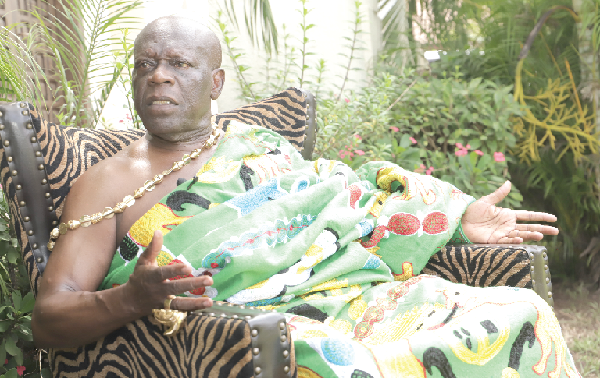
Let’s modernise palanquin use - Ehunabobrim Prah Agyensaim VI tells chiefs
Chiefs in the country are being encouraged to lead the charge to abolish traditional and cultural practices that are archaic and rather use technology and modernity to preserve what can help to accelerate development.
One of such practice is the carrying of chiefs in palanquins on festive occasions which is being described as outmoded, hence the need to reconsider it.
The President of the Owirenkyiman Traditional Council, Ehunabobrim Prah Agyensaim VI, who made the call in an interview with the Daily Graphic, said “As traditional leaders, we are encouraged to change or abolish the customs and practices that retard progress. We are also the custodians of customs and tradition and we have to lead the charge to reform those that no longer beneficial.
Advertisement
“The practice of other humans beings carrying another because he was a chief or king was dehumanising in this modern day, hence the need for traditional authorities to reconsider changing it.
“I find it very offensive to be carried by my fellow human beings, simply because I’m the king. I think just as we have found a way of preserving our customs and traditions, we can find a way of using the palanquins without having to necessarily have it on other people’s heads,” he stressed.
Ehunabobrim was sharing his thoughts and experiences as he prepared to celebrate his 40th anniversary of his enstoolment as King of Assin Kushea and President of Owirenkyiman.
Alternative
Nana Agyensaim said in the olden days, it was understandable that chiefs were carried around in palanquins for official events, but could not have any excuse for holding on to that practice now with the advancement of technology and modernisation.
He, therefore, proposed an alternative for consideration, modernising the palanquin to serve the same purpose.
“The purpose of the palanquin is to get the chief to be paraded through the town to a place. This can be done by modernising the palanquin from a head carriage to a wheel carriage. In other jurisdictions outside Ghana, carriages have been used for centuries. We did not have that from the start, but technology and modernity have made it possible and we have to consider that,” he explained.
He described that as “more humane as that was similar to being driven in vehicles.”
Chieftaincy a calling to serve
Ehunabobrim, who is also a member of the Central Regional House of Chiefs, further said having led his people for 40 years, he had come to appreciate the fact that chieftaincy was a calling and once one was given the opportunity, it had to be used to lead for the development and progress of the community.
He, therefore, stressed the need for chiefs and traditional leaders to use the opportunity they had to develop the communities in whatever way they could to help in the progress of their people.
“After all these years as the leader, I have come to understand that chieftaincy is a calling. When that happens, what you have, you give to your people and are always concerned about the progressive development of your community and people.
“Chiefs and traditional leaders must be agents of development and service and not to lord it over the people and that can only be done when we see that privilege as a calling.
“If you are not called to lead, you end up taking what they have and make no meaningful contribution towards their development. Just as we expect leaders in other spheres of life to impact on our lives by coming up with interventions, so must traditional leaders,” he stressed.
Leading by example in 2017, Ehunabobrim launched a four-year development plan for opening up Kushea.
Dubbed: “Kushea opening 2020,” the plan covered a number of areas, including education, health, tourism, finance, agriculture and employment and after four years, he said, there had been steady progress.
“We have laid a strong foundation of making the area a tourism destination and we will continue to build on it, this we have done with a deliberate effort to make Owirenkyiman the most clean community in Ghana.
“We have also improved on the quality of education by making it accessible with five more schools from the one we had in the past, and giving incentives to teachers as well as building a healthcare facility,” he gave a progress report on the plan.
40 years of reign
Ehunuabobrim Prah Agyensaim VI was enstooled chief in October,1982, following the death of his uncle, NN Prah Agyensaim V, known privately as George Aikins.
Known in private life as Wellington E. Jonah, he is the first of eight children, including Dr Sam Jonah.
He grew up having no idea that he was heir apparent, though his grandmother usually called him ‘Daakye hene’ meaning a future king.
After his primary and secondary education at Obuasi and Ghana National College in Cape Coast, his father sent him abroad for university education and graduated with an LLB/BA (Honours) in Business Law from the Metropolitan University of London.
He worked with Arnold and Sons in London after his law degree and then moved to Ghana to serve as a legal officer at the Ministry of Trade.
He is a Barrister at Law having been called to the Ghana Bar in 1995.